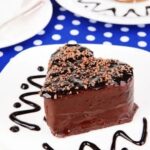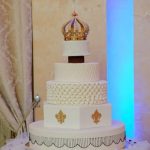Are you wondering when to put fondant decorations on a cake? Timing is crucial when it comes to achieving a flawless and visually stunning cake design. Understanding the importance of timing with fondant decorations is essential for every baker and cake decorator.
The ideal time to add fondant decorations to a cake depends on various factors, including the type of cake and the complexity of the decoration. Additionally, considering external factors such as temperature, humidity, and surface texture is crucial for successful adherence of fondant decorations.
In this article, we will delve into the significance of timing when adding fondant decorations to a cake, as well as provide helpful tips and tricks for perfectly adhering fondant decorations. Whether you’re a beginner or an experienced baker, mastering the art of fondant decoration timing will elevate your cake designs to new heights.
The Ideal Time to Add Fondant Decorations to a Cake
Adding fondant decorations to a cake can be a delicate process, and the timing of when to add them is crucial for a successful outcome. The ideal time to add fondant decorations to a cake depends on factors such as the type of cake being decorated and the complexity of the decorations. It is important to take these considerations into account in order to achieve the best results.
When working with different types of cakes, such as butter cakes, sponge cakes, or even fruit cakes, it’s essential to understand how each type behaves with fondant. Butter cakes, for example, are sturdier and can hold heavier fondant decorations better than sponge cakes, which are more delicate. Understanding the properties of the cake will help determine the right time to add fondant decorations without compromising its structure.
In addition to considering the type of cake, it’s also important to evaluate the complexity of the decorations being added. Intricate fondant designs may need more time to set and adhere properly to the cake’s surface. Simple cut-out shapes may require less drying time before being placed on the cake. Taking into account both cake type and decoration complexity will ensure that fondant decorations are added at the ideal time for optimal results.
- Consideration must be given to the type of cake being used.
- Complexity of fondant decorations must be taken into account.
- Drying time may vary based on these factors.
Ultimately, knowing when to put fondant decorations on a cake is key in achieving a flawless finish. By understanding how different types of cakes behave with fondant and considering decoration complexity, decorators can ensure that their creations stay intact and look stunning when presented. Finding the right balance between these factors will result in beautifully adorned cakes that impress any audience.
- Understanding how different types of cakes behave with fondant
- Taking into consideration decoration complexity
- Finding a balance between these factors for successful results
Factors to Consider Before Adding Fondant Decorations
Before adding fondant decorations to a cake, there are several important factors to consider. These include the temperature and humidity of the environment, as well as the texture of the cake’s surface. Taking these factors into account will help ensure that your fondant decorations adhere properly and look their best.
- Temperature: It’s essential to work in a cool, dry environment when placing fondant decorations on a cake. High temperatures can cause the fondant to become sticky and difficult to work with, while cold temperatures can cause it to crack. Aim for room temperature conditions when working with fondant.
- Humidity: High levels of humidity can also affect fondant decorations, causing them to become soft and lose their shape. If you live in a humid climate or if it’s a particularly humid day, consider using a dehumidifier or air conditioning in your workspace.
- Surface Texture: The texture of the cake’s surface is crucial for proper adhesion of fondant decorations. A smooth, even surface will provide the best results. If necessary, you can use a layer of buttercream or ganache as a base before applying fondant.
By taking these factors into consideration before adding fondant decorations to your cake, you’ll set yourself up for success and achieve professional-looking results. Keep an eye on the temperature and humidity of your workspace, and ensure that the cake’s surface is suitable for applying fondant. With these considerations in mind, you’ll be well-prepared to create stunning designs with fondant decorations on your cakes.
Step-by-Step Guide
Preparing the Fondant Decorations
Before placing fondant decorations on a cake, it is essential to ensure that the decorations are prepared and ready to be placed. Roll out the fondant to the desired thickness, and use cookie cutters or sculpting tools to create the shapes and designs for your decorations.
It is also important to allow the fondant decorations to dry slightly before placing them on the cake, as this will make them easier to handle and less likely to lose their shape during placement.
Applying Edible Glue or Water
In order for fondant decorations to adhere properly to a cake, it is necessary to apply edible glue or water to the back of each decoration. This can be done using a small brush or even just your fingertip, ensuring that the entire back surface of the decoration is lightly coated with the adhesive. This step is crucial for ensuring that the decorations stay in place once they are placed on the cake.
Placing the Fondant Decorations on the Cake
Once your fondant decorations have been prepared and adhesive has been applied, carefully place them onto the cake in your desired arrangement. It is important to do this gently but confidently, ensuring that each decoration adheres securely without smudging or distorting. If you need extra precision, you can use small tweezers or toothpicks to adjust the position of your decorations before they fully set.
By following these steps and taking into account factors such as temperature and humidity, you can ensure that your fondant decorations are placed onto a cake at just the right time for stunning results.
Tips and Tricks for Perfectly Adhering Fondant Decorations to a Cake
Adding fondant decorations to a cake can be a delicate process, and timing is crucial to ensuring that the decorations adhere perfectly without losing their shape or texture. When to put fondant decorations on a cake depends on several factors, including the type of cake, complexity of the decorations, and environmental conditions such as temperature and humidity. In this section, we will discuss some tips and tricks for achieving perfect adherence when adding fondant decorations to a cake.
One important factor to consider when adding fondant decorations to a cake is the type of cake being used. A dense, moist cake such as chocolate fudge or carrot cake is better suited for supporting heavier fondant decorations compared to lighter cakes like sponge or chiffon. The ideal time to add fondant decorations also depends on the complexity of the design. Intricate designs may require more time to dry and set properly before being added to the cake.
Temperature and humidity play a significant role in determining when to put fondant decorations on a cake. High humidity can cause the fondant to become sticky and lose its shape, while extreme heat can cause it to melt or sag. It’s important to work in a cool, dry environment when adding fondant decorations to ensure that they adhere seamlessly.
Additionally, the surface texture of the cake also affects how well fondant decorations adhere. A smooth, flat surface provides a better base for attaching decorations compared to a textured or crumbly surface.
| Factor | Consideration |
|---|---|
| Cake Type | Dense cakes are better for supporting heavier fondant decorations |
| Decoration Complexity | Intricate designs may require more drying time before being added |
| Temperature and Humidity | Cool, dry environment is essential for proper adherence |
| Surface Texture | A smooth surface provides a better base for attaching decorations |
Common Mistakes to Avoid When Adding Fondant Decorations to a Cake
When it comes to decorating a cake with fondant, there are several common mistakes that can easily be avoided with the right knowledge and preparation. One of the most frequent mistakes is adding fondant decorations to a cake at the wrong time, which can lead to issues such as sagging, cracking, or not adhering properly. It is crucial to understand the ideal timing for adding fondant decorations in order to achieve professional-looking results.
Another common mistake is not considering the temperature and humidity of the environment when working with fondant decorations. Extreme temperatures can cause the fondant to become either too soft or too hard, making it difficult to work with and resulting in a less than perfect finish on the cake. Additionally, not taking into account the texture of the cake’s surface before applying fondant decorations can lead to an uneven and unprofessional appearance.
Furthermore, rushing through the process of adding fondant decorations without proper preparation and attention to detail is a mistake that should be avoided. Taking the time to carefully plan out the placement and design of the decorations will ultimately lead to a more polished and visually appealing final product. Following a step-by-step guide for properly placing fondant decorations on a cake is essential for avoiding these common mistakes and achieving professional results.
| Common Mistakes | How to Avoid |
|---|---|
| Adding fondant decorations at the wrong time | Understand ideal timing for adding fondant decorations |
| Not considering temperature, humidity, and surface texture | Take environmental factors into account before working with fondant |
| Rushing through the process without proper preparation | Follow a step-by-step guide for placing fondant decorations on a cake |
Advanced Techniques
Once you have mastered the art of adding fondant decorations to a cake, you can take your skills to the next level by learning how to layer fondant decorations and create stunning 3D effects. These advanced techniques can elevate the design of your cakes and add a touch of sophistication to your creations.
Layering Fondant Decorations
Layering fondant decorations on a cake can add depth and complexity to the design. To achieve this effect, start by placing larger fondant pieces on the cake as a base layer. Then, carefully add smaller fondant details on top of the base layer. This technique allows you to create visually interesting designs that stand out and capture attention.
Creating 3D Effects
Adding 3D effects to fondant decorations can make your cakes truly memorable. You can achieve this by using techniques such as embossing, ruffling, or sculpting the fondant into intricate shapes and designs. Additionally, you can create three-dimensional elements such as flowers, figurines, or other themed decorations that bring your cakes to life.
Expert Tip
When layering fondant decorations or creating 3D effects, it’s important to ensure that each piece adheres firmly to the cake. Use edible glue or a small amount of water to secure each element in place, taking care not to distort the shape or texture of the fondant. With practice and precision, you can master these advanced techniques and take your cake decorating skills to new heights.
By mastering the art of layering fondant decorations and creating 3D effects, you can transform ordinary cakes into extraordinary works of art that will impress and delight anyone who sees them. These advanced techniques require patience, precision, and creativity but are well worth the effort when you see the stunning results they can produce on your beautifully decorated cakes.
Conclusion
In conclusion, mastering the art of fondant decoration timing is essential for creating stunning cake designs. Understanding the ideal time to add fondant decorations to a cake is crucial for ensuring that they adhere properly and maintain their shape and intricacy. By considering factors such as cake type, decoration complexity, temperature, humidity, and surface texture, decorators can achieve professional-looking results.
The step-by-step guide provided in this article offers valuable insight into properly placing fondant decorations on a cake. Additionally, the tips and tricks shared can help decorators perfect their technique and achieve flawless results. It’s important to take into account the environmental conditions when deciding when to put fondant decorations on a cake, as temperature and humidity can greatly affect the outcome.
By avoiding common mistakes and utilizing advanced techniques such as layering fondant decorations and creating 3D effects, decorators can take their cake designs to the next level. With practice and attention to detail, anyone can master the art of fondant decoration timing and create visually stunning cakes that will impress any audience. So, whether you’re a seasoned decorator or just starting out, mastering the art of timing with fondant decorations is key to achieving professional-quality results.
Frequently Asked Questions
Can I Refrigerate a Cake With Fondant Decorations?
Yes, you can refrigerate a cake with fondant decorations, but there are a few considerations. Condensation can form on the fondant when it comes out of the fridge, so it’s best to allow the cake to come to room temperature before serving.
How Long Will Fondant Decorations Last on Buttercream?
Fondant decorations will typically last for a few days on buttercream, as long as the buttercream is not too moist. If the buttercream starts to break down or become sticky, the fondant decorations may not hold up as well.
Should You Chill a Cake Before Putting Fondant on It?
It’s generally recommended to chill a cake before putting fondant on it. Chilling the cake helps to firm up the buttercream, making it easier to smooth and shape before adding the fondant. However, be cautious of condensation forming on the fondant when removing it from the fridge.

Welcome to my blog about home and family. This blog is a place where I will share my thoughts, ideas, and experiences related to these important topics. I am a stay-at-home mom with two young children. I hope you enjoy reading it! and may find some helpful tips and ideas that will make your home and family life even better!





